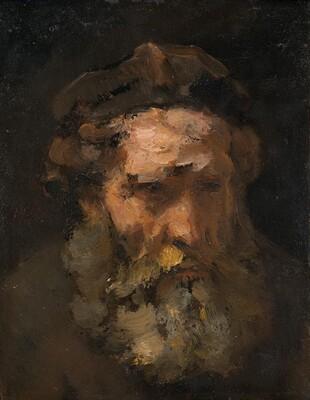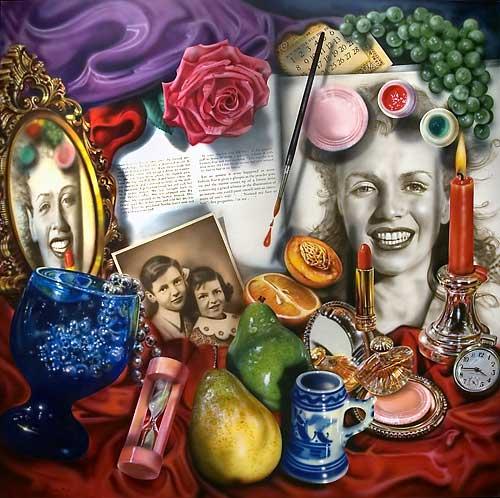
Head of Saint Matthew is a loosely stroked drawing of a bearded older man with a beret drawn by Rembrandt van Rijn. The given painting is one of the significant oil paintings on a panel with the same person (Head of Saint Matthew, n.d.). Once this drawing first appeared in Rembrandt’s literature in the late 19th century, the vast, impressionistic application of the paints was recognized as a trademark of the painter’s late technique (Head of Saint Matthew, n.d.). Before completing this masterpiece, Rembrandt van Rijn learned the fundamentals of art and painting for an extended period and took lessons from a famous painter, Pieter Lastman.
Among the sources required to complete the given work were the paint and a thick oak panel. First, the foundation is a vertically textured, thin wood panel that is polished from every side (Head of Saint Matthew, n.d.). The panel is not adequately sawn, which led to an uneven grain pattern, lacking sapwood and preventing the panel from being dated. As for the paint, it was placed on top of a coarse, dark surface (Head of Saint Matthew, n.d.). The older man’s face was painted with an impasto technique, while the surroundings were painted with delicate varnishes.
Additionally, it is noteworthy that the wet-into-wet technique was used in several areas. According to research, the colors are compatible with those seen in 17th-century studio practice (Head of Saint Matthew, n.d.). The work can be considered well-crafted due to the savvy coloration of the painting and maintained minimalism in sources. If the painter opted for more bright and vibrant colors and another kind of canvas, the painting could lose its meaning and earnestness.

Audrey Flack created Marilyn (Vanitas) in 1977 work, in which oil was used over acrylic. The main focus of the painter was the idea that the woman, as one of the vanitas, functions as a memorial reflection on Marilyn Monroe’s life and fame. The painting contains traditional elements, such as an hourglass and a candle, and newer elements, such as a photograph and a calendar. Nonetheless, unlike typical vanitas, the woman in the painting functions as a self-portrait.
Before completing the masterpiece, the painter invented a new method in the early 1970s. Rather than simply utilizing an image as a source, Flack shifted it onto the canvas and then used a retouching method to produce the coats of paint, which required special skills and training (Maurer, 2009). Thus, aside from the new technique utilized, the media used for the piece were oil and acrylic paints, pictures, and a canvas.
Indeed the work is well-crafted due to a profound combination of elements in the painting. Flack appeared to resonate with Monroe’s notions of feminine demeanor and appearance. Elements of beauty and charisma are depicted in the form of makeup products and flowers. Similarly, the hourglass and calendar all directly relate to the flow of time (Maurer, 2009). Furthermore, fruit and flowers also represent the time since they degrade. The faded photograph depicted is out of date in comparison to its setting, implying that time has passed (Maurer, 2009). The representation of a flame may allude to religious roots, producing a scenario reminiscent of an altar installation (Maurer, 2009). Nevertheless, the work could be more successful if the painter used less vibrant colors and opted for more pastel pigments to indicate the softness of Monroe’s character and the feeling of antiquity.
References
Head of Saint Matthew. (n.d.). The National Gallery of Art.
Maurer, A. (2009). Audrey Flack’s Marilyn: Still life, vanitas, trompe. The University of Arizona Museum of Art and Archive of Visual Arts.